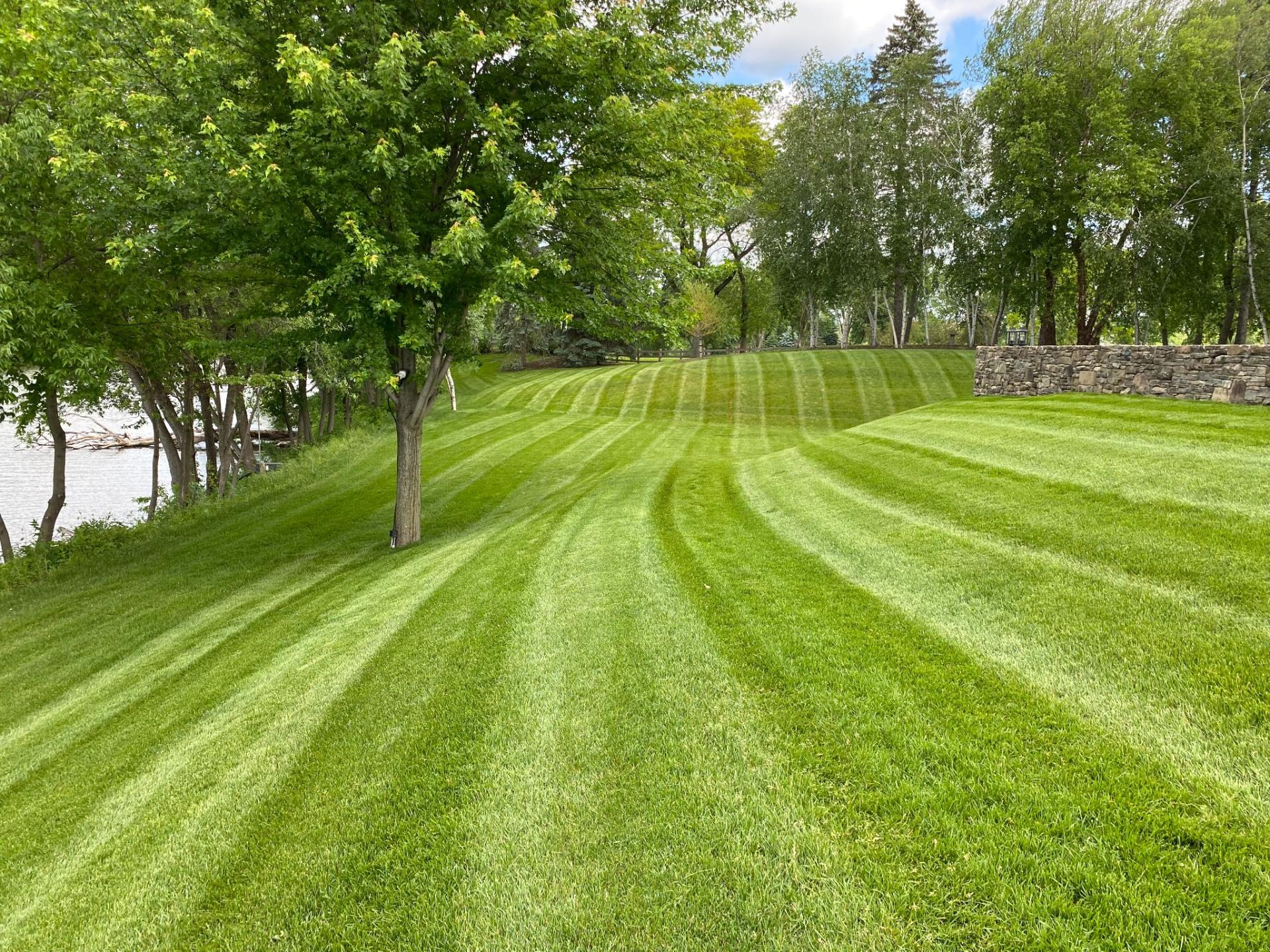You are here
Be a Better Gardener: Since We Seem So Stuck on Lawns, Might We Consider Some Tweaking?
Be a Better Gardener: Since We Seem So Stuck on Lawns, Might We Consider Some Tweaking?
By Thomas Christopher
Environmentally concerned gardeners (of which I count myself one) have been calling for a long time for the elimination of lawns. I remember as a horticultural student at the New York Botanical Garden almost 50 years ago hoping that America’s lawns would be replaced by some other sort of landscape treatment that is less addicted to toxic chemicals and less greedy for water and polluting fertilizers. More recently, I’ve come to regret that lawns provide so little benefit to wildlife.
Despite all of this, the area of lawns in the United States has continued to expand. I’ve come to accept that there are reasons why Americans are so loyal to turf. As a groundcover, it is relatively easy and inexpensive to install. It’s also relatively simple (though laborious) to maintain, so this work can be outsourced to affordable unskilled labor. In addition, turf is more tolerant of foot traffic than almost any other sort of planting, which makes it an ideal place space for children.
I still hope that much of our underutilized turf, such as the huge corporate lawns that are for show only and which require so much irrigation and so much pesticides and synthetic nitrates, will be converted to something more ecologically beneficial. It would be invaluable, too, if homeowners would find space within their lawns to install pollinator plantings and areas of wildlife habitat. As for what remains after these subtractions, though, I think that rather than trying to persuade the owners to dig it up, instead we should encourage the residual lawns’ transformation.
That was the crux of a conversation I had recently with Shay Lunseth, owner of Organic Lawns by Lunseth in Bloomington, Minn. I met Shay a couple of years ago at a symposium hosted by the Ecological Landscape Alliance, and I was struck by both her knowledge of turf and her commitment to making it more environmentally friendly. When I checked in with her a couple of weeks ago, she pointed out that late summer through early fall is an ideal time to start this upgrade.
The first step, she told me, was to assess the suitability of the grass you are growing to the site and climate, and your needs. Its lush appearance makes Kentucky bluegrass a popular favorite, but it is a shallow-rooted turf that is heavily dependent on irrigation and especially greedy for fertilizer. Shay has been working with a couple of alternatives. She’s found a blend of fine fescue grasses — equal parts creeping red fescue, hard fescue and Chewings fescue — that requires only about half the fertility of Kentucky bluegrass and which is more drought tolerant and adapted to poorer soils (so long as they are well-drained). Fine fescue lawns are also slower growing and require only a couple of mowings each summer. They are not as wear-tolerant as Kentucky bluegrass and so should be reserved for areas that don’t undergo a lot of foot traffic.
Lawn watering is one of the principal consumers of water in suburban areas. The Environmental Protection Agency calculates that nationwide, it uses about 8 billion gallons of water a day.
Homeowners who don’t care to contribute to this waste of an essential resource will find, says Shay, that turf-type tall fescues are especially drought resistant and better able to cope, in most circumstances, on the natural budget of rainfall. This is because turf-type tall fescues send their roots as much as 2 to 3 feet down into the soil, tapping a much deeper reservoir of moisture than Kentucky bluegrass, whose roots typically reach a depth of only 4 to 8 inches.
If fostering pollinators is your concern, Shay suggests planting a “bee lawn,” a concept promoted by the University of Minnesota extension service. To do this, Shay adds seed of low-growing flowers that tolerate mowing to a fine fescue seed mix. The recipe recommended by the University is 4 lbs of fine fescue seed, 1.1 oz of Dutch white clover, 0.16 oz of creeping thyme, and 1.2 oz of self-heal per 1000 square feet of lawn. Such a lawn was found by the University to attract visits by more than 50 species of native bees.
Late summer through early fall, says Shay, is the ideal time for sowing grass seed. The cooling, usually moister weather is ideal and weeds are not so competitive then. For more information about suggested fall lawn care, listen to my conversation with Shay Lunseth on the Berkshire Botanical Garden’s “Growing Greener” podcast at berkshirebotanical.org/growinggreener.
Be-a-Better-Gardener is a community service of Berkshire Botanical Garden. Its mission, to provide knowledge of gardening and the environment through a diverse range of classes and programs, informs and inspires thousands of students and visitors each year. Thomas Christopher is a volunteer at Berkshire Botanical Garden and is the author or co-author of more than a dozen books, including Nature into Art and The Gardens of Wave Hill (Timber Press, 2019). He is the 2021 Garden Club of America's National Medalist for Literature, a distinction reserved to recognize those who have left a profound and lasting impact on issues that are most important to the GCA. Christopher’s companion broadcast to this column, Growing Greener, streams on WESUFM.org, Pacifica Radio and NPR and is available at berkshirebotanical.org/growinggreener.
Help Our Garden Grow!
Your donation helps us to educate and inspire visitors of all ages on the art and science of gardening and the preservation of our environment.
All Donations are 100 percent tax deductible.


